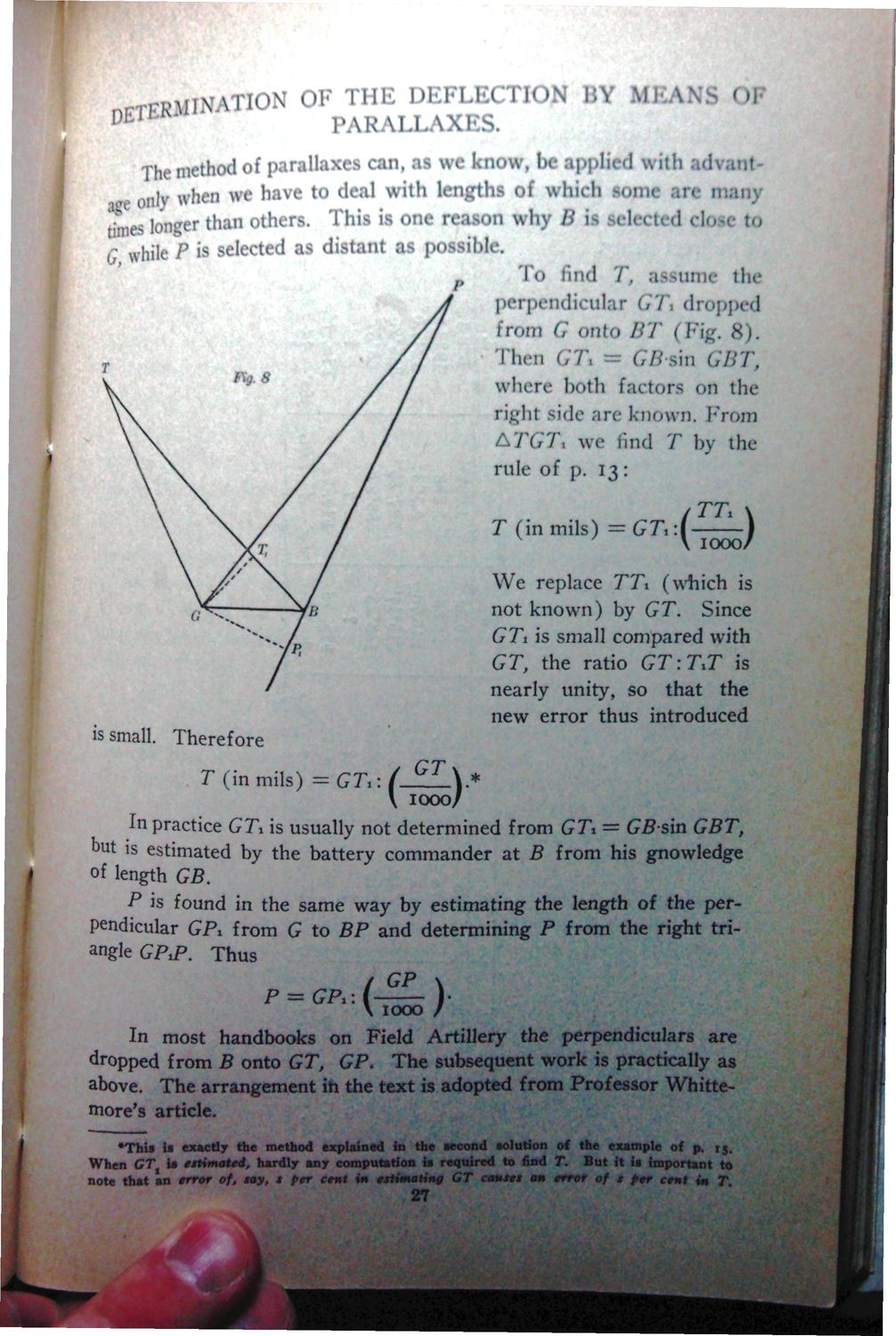Caption: War Publications - WWI Compilation 1923 - Article 46
This is a reduced-resolution page image for fast online browsing.

EXTRACTED TEXT FROM PAGE:
I ION OF THE DEFLECTION BY MEANS OF DETERMINE PARALLAXES. ^PMINA The method of parallaxes can, as we know, be applied with Ivant onlv when we have to deal with lengths of which some ai< man tjfnes longer than others. This is one reason w liy B is selected ch to r. while P is selected as distant as possible. To find T, assume the perpendicular 17 dropped from (i onto BT ( Fig. 8). • Then GT, = Gh sin GBT, where both factors on the righl side are known. From tkTGTx we find T by the rule of p. 13: / T (in mils) = G T , : ( V 1 1000/ We replace TTt (which is not known) by GT. Since GTi is small compared with GT, the ratio GT:TxT is nearly unity, so that the new error thus introduced is small. Therefore T (in mils) GTi GT 1000 In practice GTi is usually not determined from GTi = GBs'm GBT, but is estimated by the battery commander at B from his gnowledge of length GB. per and determining P from angle GPJ>. Thus GP P GP 1000 In most handbooks on Field Artillery the perpendiculars are dropped from B onto GT, GP. The subsequent work is practically as above. The arrangement ih the text is adopted from Professor Whittearticle^^^^^^^^^^^^^^^^^^^^^^^^^^^^^^^^H •ThU to exactly the method explained in the aecond «olution of the example of p. When GT U estimated, hardly any computation is required to find T. But it ii important note that i n error of, **y> * P*r cent in estimating GT camset an error of e per cent in • * I! •
|